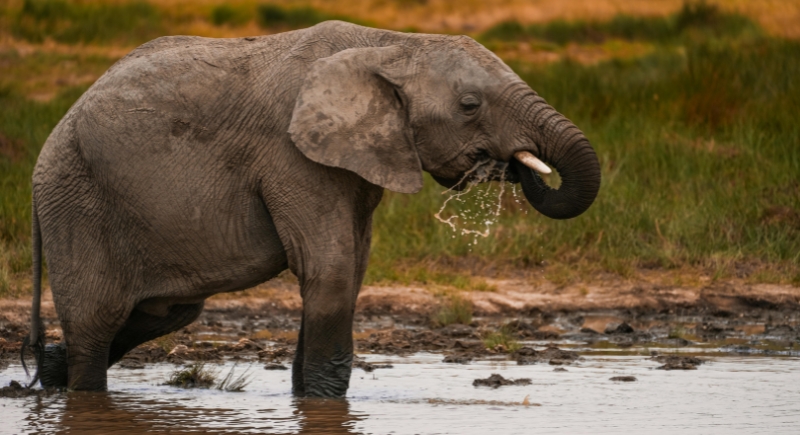Heartbreaking Photos That Show What Riding Does to an Elephant’s Body
Pai Lin is a 71-year-old elephant who worked in Thailand’s tourism industry for more than 25 years. During that time, she was forced to carry heavy loads, sometimes as many as six tourists at once. The years of strain left her spine permanently deformed, caved in where it should naturally be rounded. She still carries scars from the pressure points of the heavy seat strapped to her back.
When Pai Lin grew older and slower, her owner gave her up because she could no longer keep up with the demands of the job. Wildlife Friends Foundation Thailand (WFFT) rescued her in 2006 and brought her to their sanctuary near Hua Hin. Today, she finally lives free from work and pain, though the damage to her body will never be reversed.
Elephant Rides Are Damaging
Tourists often assume elephants are strong enough to carry people, but their bodies simply aren’t made for it. Their spines extend upward, which means that weight from seats, ropes, and passengers presses directly into bones and tissue in harmful ways. Over time, this causes deformities that cannot heal.
Pai Lin isn’t the only one affected. Another elephant at the sanctuary, Boon Chuey, also has a damaged back after decades of trekking work. Many others across Southeast Asia suffer not only physical deformities but also exhaustion and malnutrition. Some do not survive the years of overwork.
Social Media’s Role in Raising Awareness
The photo of Pai Lin’s damaged back shared on Instagram by WFFT has been viewed by thousands of people. The post has sparked widespread outrage, with commenters calling for an end to elephant rides.
Edwin Wiek, founder of WFFT, explained that elephants are not domesticated animals like horses. Most are taken from the wild and forced into abusive conditions. As tourism returns after the pandemic, he hopes that stories like Pai Lin’s will encourage travelers to choose ethical experiences that do not exploit animals.
A Better Life at the Sanctuary

Image via Pexels/Alex Ning
At the WFFT sanctuary, Pai Lin lives with 24 other rescued elephants in large enclosures with trees, lakes, and grazing areas. Although she has gained weight and looks healthier now, the shape of her spine is a constant reminder of her past. Caretakers describe her as an introvert who prefers her own space but enjoys gentle attention from people. She can be moody around food, but she is also affectionate in her own way.
Her story is a great example of how smiling tourist photos taken on elephant rides often hide a lifetime of suffering. While Pai Lin cannot be healed, she can live her remaining years in comfort. For travelers, the choice is simple: support sanctuaries that care for elephants instead of businesses that exploit them. By saying no to elephant rides, fewer animals will have to endure the same fate.